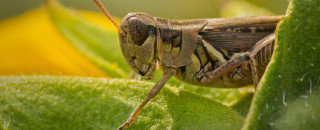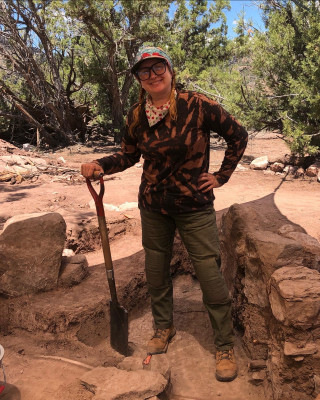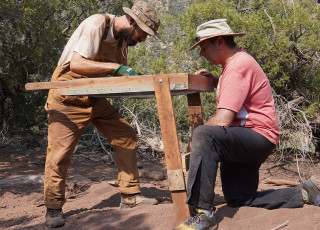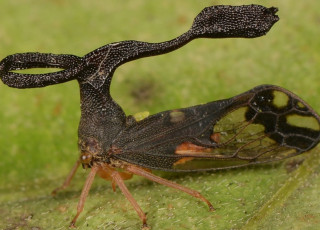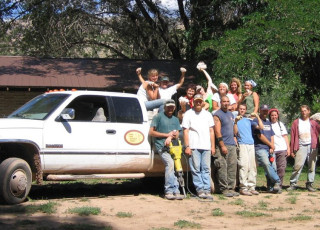A Plague of Grasshoppers: Farming in Range Creek Canyon
By Shannon Boomgarden
In the summer of 2023, Utah news reports and social media posts raised alarm over swarms, plague, hordes, and even a biblical invasion of grasshoppers around the state. Outbreaks of these destructive pests are not uncommon and can occur more frequently following warm, dry springs that allow grasshopper eggs to hatch early. As you might imagine, farmers endure the brunt of the insects’ destructive feeding as swarms decimate rangeland and crops. But this is not a new problem faced only in the present day. Past peoples planting crops in this region thousands of years ago might have faced similar plagues of grasshoppers, and now archaeologists at Range Creek Canyon are gaining a better understanding of how early inhabitants dealt with the pests.
For nearly a decade, archaeologists at Range Creek Canyon have been conducting actualistic experiments to better understand prehistoric people and how they made subsistence decisions. In these experiments, archaeologists perform activities themselves that past peoples might have participated in, producing the artifacts and features found preserved in the archaeological record for comparison1. The results are used to fill in missing information from the archaeological record, like how long a farmer should spend irrigating, weeding, or defending crops from pests, like grasshoppers, to get the greatest return for their efforts.
What to Do When Grasshoppers Attack?
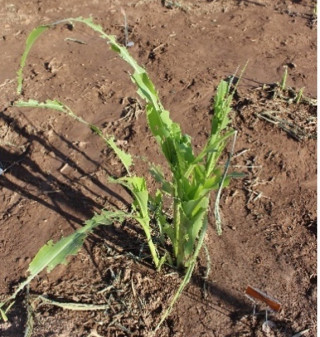
Left-photo of corn plant ravaged by grasshoppers at early developmental stage
Over the last 10 years, the grasshopper population in Range Creek (Twostriped Grasshopper-Melanoplus bivittatus) has increased significantly. Despite the efforts by researchers to protect corn being grown in the canyon, the harvest yields have decreased and in some years were a total loss. With 80 percent of the Fremont diet typically coming from corn, similar losses would have been devastating to the original inhabitants of the canyon.2
Jordin Muller, a recent graduate of the University of Utah, took on the Range Creek grasshopper problem, investigating how Fremont farmers might have dealt with plagues of similar pests attacking their crops.3 Grasshoppers are not only pests, but are a large part of the diet for many populations worldwide.4 Numerous ethnographic and historic reports show that grasshoppers were a problem for past farmers, causing reduction in productivity or complete devastation of crops. 4,5,6,7
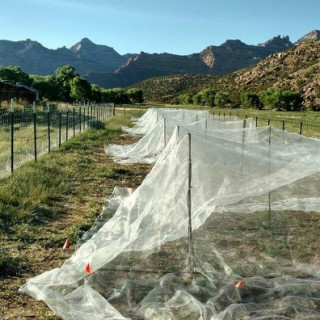
Nets covering experimental corn plots to protect them from grasshoppers.
With limited techniques for controlling pests prior to the development of modern pesticides4,5 Mullerquestioned what strategies might have been employed prehistorically. In Utah there is evidence of prehistoricforagers consuming grasshoppers in archaeological cave deposits near the Great Salt Lake, where grasshoppers were easy to collect in mass along the shore before being dried and salted in preparation to eat.8 Grasshoppers, it turns out, are packed with beneficial nutrients.
Is it Worth it to Collect Grasshoppers One at a Time?
To measure the costs and benefits for collecting grasshoppers from maize fields, Muller led NHMU staff and students in actualistic collection experiments over two years. Here is what worked best:
• Collect at dusk or just before sunrise when grasshoppers become lethargic in cooler temperatures making them easier to collect. The grasshoppers climb to the top of the corn stalks as the sun goes down.
• Grasshopper nymphs emerge on the edges of disturbed farm fields first and start spreading before they develop wings. Capturing as many as possible before they get wings and travel longer distances can reduce their impacts to crops. Adult grasshoppers who migrate into crops as adults will typically return to crop borders for reproduction.8 Get them before they can reproduce for long term benefits!
• Approach corn plants slowly, grab each visible grasshopper within reach quickly, remove head, and toss into basket. If a grasshopper gets away don’t chase it. The goal is reducing numbers efficiently to reduce their impacts on yields, not spending energy chasing down every single grasshopper.
Return Rates for Collecting Grasshoppers?
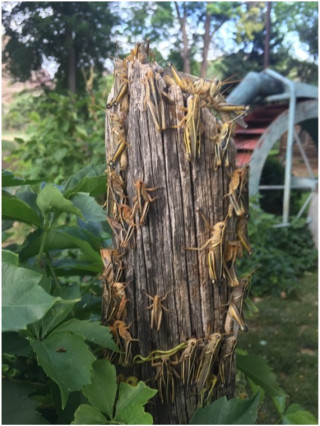
Muller needed to calculate a return rate (calories collected per hour of effort). She recorded an average density of 20 grasshopper per square meter at the Range Creek Field Station. In her experiments, it took a forager four seconds to collect a single grasshopper with an average collection time of 0.76 minutes per square meter. She collected an average weight of 0.88 g wet/.031 g dry per grasshopper, and an average of 0.95 kcals per grasshopper. Her collection bouts produced an upon encounter return rate of 851 kcal/hr. Collectors could get a maximum average return of 1702 kcals per day during the approximately two hours of cool temps. Muller’s results suggested that at the density of grasshoppers found in Range Creek in 2020, it was worth collecting them for those two hours a day if there wasn’t another activity offering higher return rates at that time. If grasshopper density drops, the costs required to search for grasshoppers goes up and the returns get lower. If they drop below approximately 12 grasshopper per square meter they are not going to have as much impact on crops. 9
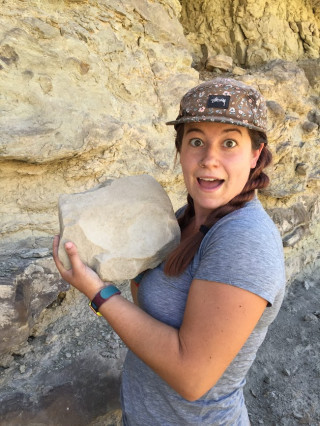
Jordin Muller.
What Muller was not able to measure, is the resulting improvement of maize yields for her collection efforts, but every grasshopper collected is a grasshopper that can’t eat corn, or produce more corn eaters for next year. Luckily, the field station allows researchers the opportunity to design long-term experiments that can be repeated many times into the future. The next student to pick up the grasshopper picking experiment may find a way to answer these questions and many more.
Learn more about the Range Creek Field station.
REFERENCES
1-Outram, A. K. (2008) Experimental Archaeology World Archaeology 40 (1):1-6.
2-Coltrain, J. B., & Leavitt, S. W. (2002). Climate and diet in Fremont prehistory: economic variability and abandonment of maize agriculture in the Great Salt Lake Basin. American Antiquity, 453-485.
3-Muller, J. and S. Boomgarden (2020) Grabbing Grasshoppers: Actualistic Experiments in Hand Culling Grasshoppers from Maize Fields and the Archaeological Implications. Unpublished manuscript on file at the University of Utah, NHMU, SLC.
4-Cerritos, R., & Cano-Santana, Z. (2008). Harvesting grasshoppers Sphenarium purpurascens in Mexico for human consumption: a comparison with insecticidal control for managing pest outbreaks. Crop Protection, 27(3-5), 473-480.
5-Haswa, S. (1999) Pests of maize and millets. Applied Entomology-Tribes of Andaman and Nicobar Islands. Mittal Publications
6-Hayden, F.V. (1862) Indian Tribes of the Missouri Valley. Contributions to the Ethnography and Philology of the Indian Tribes of the Missouri Valley. C.Sherman & Son.
7-Pfadt, R. E., & Hardy, D. M. (1987). 12. A Historical Look at Rangeland Grasshoppers and the Value of Grasshopper Control Programs. Integrated Pest Management On Rangeland: A Shortgrass Prairie Perspective, 183.
8-Madsen, D. B., & Kirkman, J. E. (1988). Hunting hoppers. American Antiquity, 593-604.
9-Pfadt, R. E. (1994). Field guide to common western grasshoppers (Vol. 912). Wyoming Agricultural Experiment Station.
